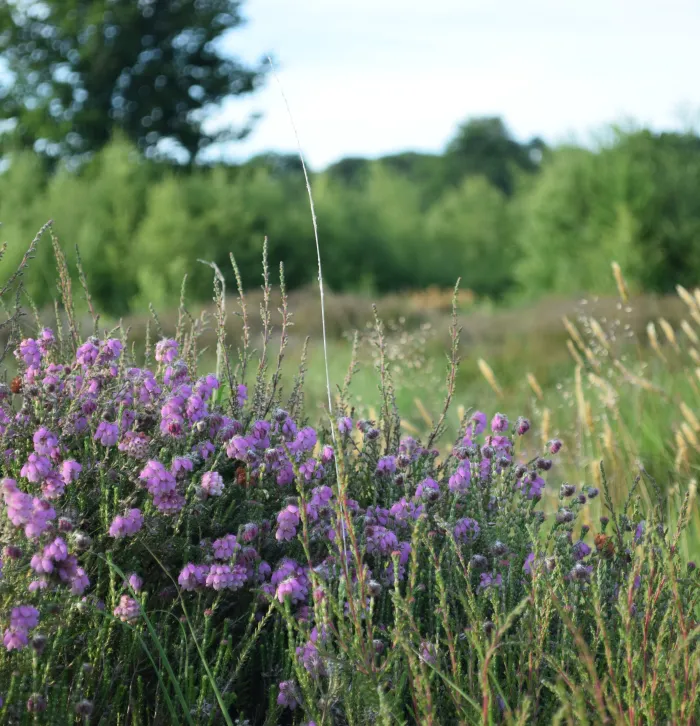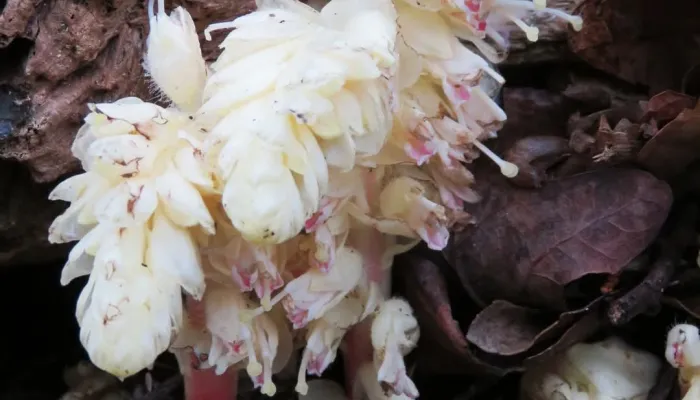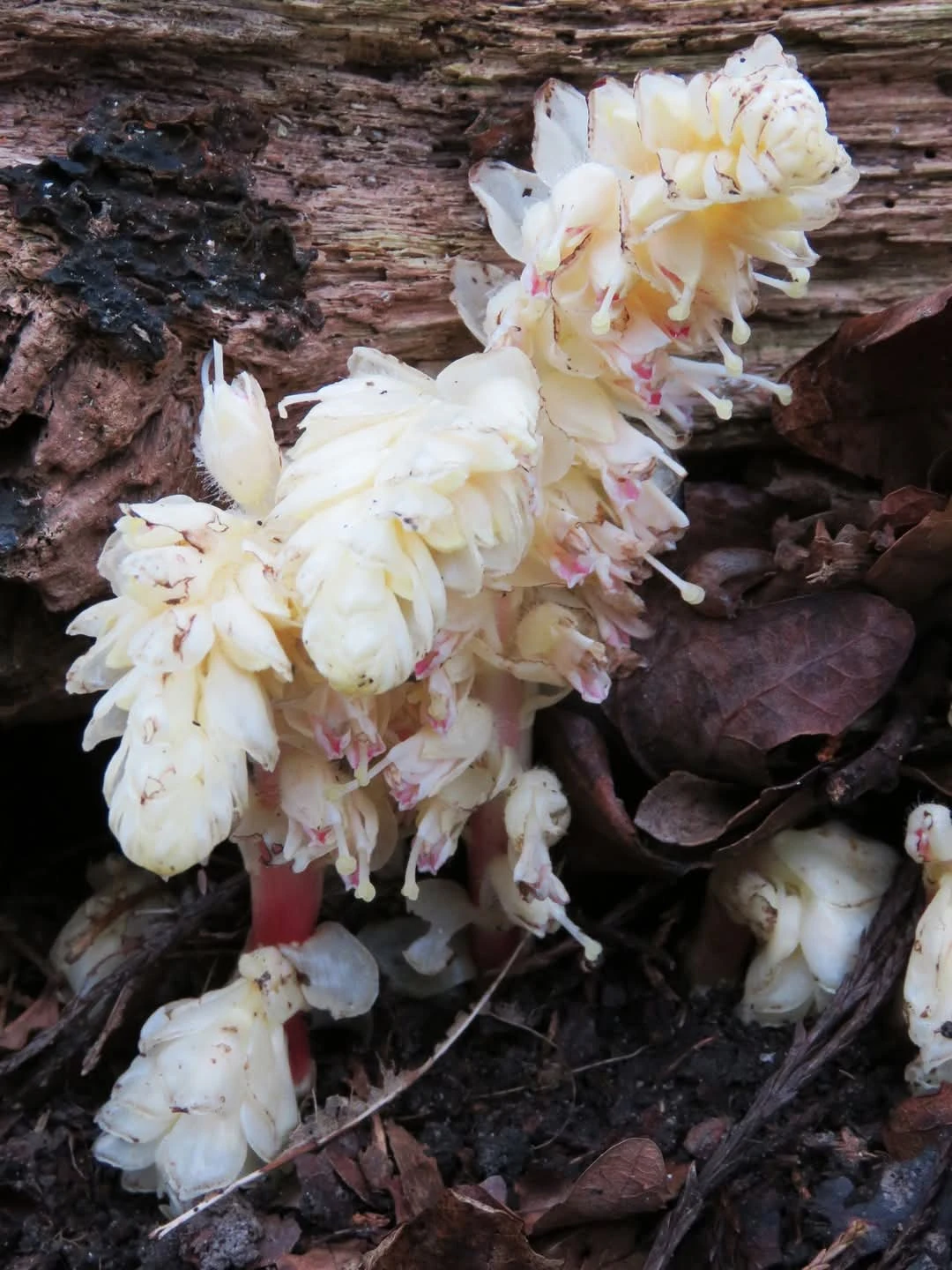Lathraea is from the Ancient Greek Lathraios meaning secret, and squamaria means scaly. Roots growing form the rhizome have pad-like suckers, haustoria, at the tips, which dissolve root tissue to reach the sap and divert some nutrients from the host. The haustoria are withdrawn through autumn and winter. Toothwort is yet another plant on the reserve that is cleistogamic, producing subterranean flowers which are automatically fertilised, like Viola paulustris and V reichenbachiana.
The leaves of toothwort, lacking chlorophyll, are reduced to small scales on the rhizome and under each flower. This uncommon and unusual plant is in the Orobanchaceae or broomrape family, as is the hemiparasite lousewort Pedicularis sylvatica found on the margins of the bogs, and yellow rattle, Rhinanthus minor, not found here but familiar to gardeners establishing meadows, semi parasitic on vigorous grasses and used very successfully in the wild garden at nearby Godinton House.
Thank you to regular visitor Neil Burt for again reporting a bird count on an evening stroll on 7 April ‘Plenty of singing chiffchaffs, 2 blackcaps, green & greater spotted woodpeckers, 2 jays, goldfinch, 10 linnets, 4 song thrushes, 2 mistle thrushes, 4 teal, 4 mandarins, 5 yellowhammers, kestrel, little egret, 2 nuthatches.’ The following week the cuckoo was heard on the reserve. Listen out for nightingales now. After a disastrous 2024 for butterflies, sightings of orange tips and peacocks, in April were welcome. Sundew that overwintered rolled up into a hibernaculum in the sphagnum moss are now uncurling in the main bog, tiny plants visible from the causeway. Also unfurling are the young croziers of bracken as the volunteers well know. They have been busy repairing and installing fencing, gates, winching tree trunks out of bogs and popping trees out of dry ground, and reinforcing leaky dams with fresh bundles of brash.
Come and relish the bird song, the bluebells, the translucent young beech leaves and, of course, the bog plants.



